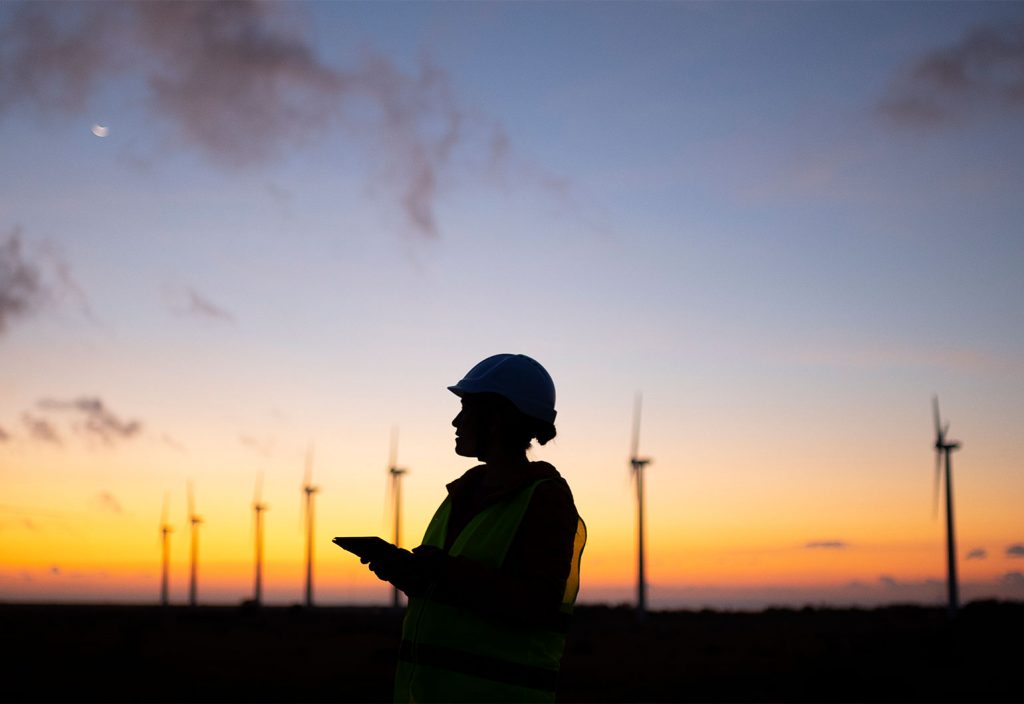Australia has a new plan to achieve net zero emissions by 2050, and engineers will be instrumental in its success.
Ahead of its inaugural Climate Smart Engineering conference and the COP26 conference in Glasgow, Engineers Australia has released its 2021 Climate Change Position Statement.
The statement enjoys strong support from Engineers Australia’s member leadership. It is signed by all College Chairs, as well as Technical Society representatives and Young Engineers Australia.
It reflects consistent feedback provided on the consultation draft that Engineers Australia should support action at pace and scale on climate change and be accessible.
As the profession’s peak body, the statement is focused on the importance of engineers in ensuring an effective and efficient response to climate change. It is intended to encourage and facilitate increased engagement among engineers on the transition to a net zero emissions society.
While Engineers Australia welcomed Australia’s new plan to achieve net zero emissions by 2050, announced by the Prime Minister this week, CEO Dr Bronwyn Evans AM HonFIEAust CPEng said climate change demands rapid action from governments and that an aggressive 2030 target is needed.
“Facing up to a challenge is the Australian way. That means embracing leadership and scaling up effective engineering solutions today,” she said.
“An ambitious 2030 target is vital to a rapid, cost-effective transition to net zero. [The] announcement should be an impetus for large-scale action now and into the coming decades.”
Announcing Australia’s Long-Term Emissions Reduction Plan on Tuesday, Prime Minister Scott Morrison said it would “deliver results through technology, not taxes”.
This includes driving down the cost of low emissions technologies, working with businesses to develop these at scale, and working with other countries on the technologies needed to decarbonise the world’s economy.
The plan singles out “ultra low-cost solar”, “clean hydrogen”, carbon capture and storage, energy storage, “soil carbon”, and low emissions steel and aluminium as priority technologies that “can contribute and enable around half the emissions reductions needed to achieve net zero”.
It aims to replicate the nation’s solar cell success, which has led to more than 90 per cent of solar cells worldwide using Australian technology.
Referencing the new net zero plan, Dr Evans said the government must develop a comprehensive emissions reduction strategy to support its commitment, and that engineers should play a vital role.
“Our profession will be at the forefront of the technological advancement required to develop solutions such as clean hydrogen, green steel, energy storage, and carbon capture utilisation and storage,” she said.
“A bold national strategy will ensure that governments, industry and the community can work together to meet the challenges and realise the opportunities of net zero.”
Transitioning to a sustainable future
The plan comes after the Intergovernmental Panel on Climate Change (IPCC)’s report, released in August, which argued humanity had reached a crisis point and that some of the impacts of climate change were now irreversible.
Speaking with create, mechanical engineer Dr Susan Krumdieck, Chair in Sustainable Energy Transition Engineering at Scotland’s Heriot-Watt University, said tackling climate change and achieving sustainability targets requires holistic change.
After devoting her career to researching sustainable energy, Krumdieck realised a business-as-usual approach to sustainability would never generate real progress. In response, she developed a new engineering discipline, transition engineering, which aims to make transitioning to a sustainable future as routine as safety engineering.
She will discuss this at the inaugural Climate Smart Engineering conference in November.
“Safety engineering led to a radically different world than we would otherwise have, and it was engineering that did it,” Krumdieck said.
“There’s nobody in a position to actually do what needs doing like engineers, because all of our fossil fuel use is produced by, and used in, complex, engineered, global systems.
“They’re the ones who know the systems that must change, and could change them, and figure out how to do it economically and develop new business opportunities in doing so.”
While engineering students might take few classes on sustainability at university, Krumdieck said the aim is that transition engineering, like safety, is integrated into all aspects of the profession, by requiring that a reduction in carbon is part of the concept generation phase of all projects.
Don’t miss Engineers Australia’s Climate Smart Engineering conference, 16-17 November.
